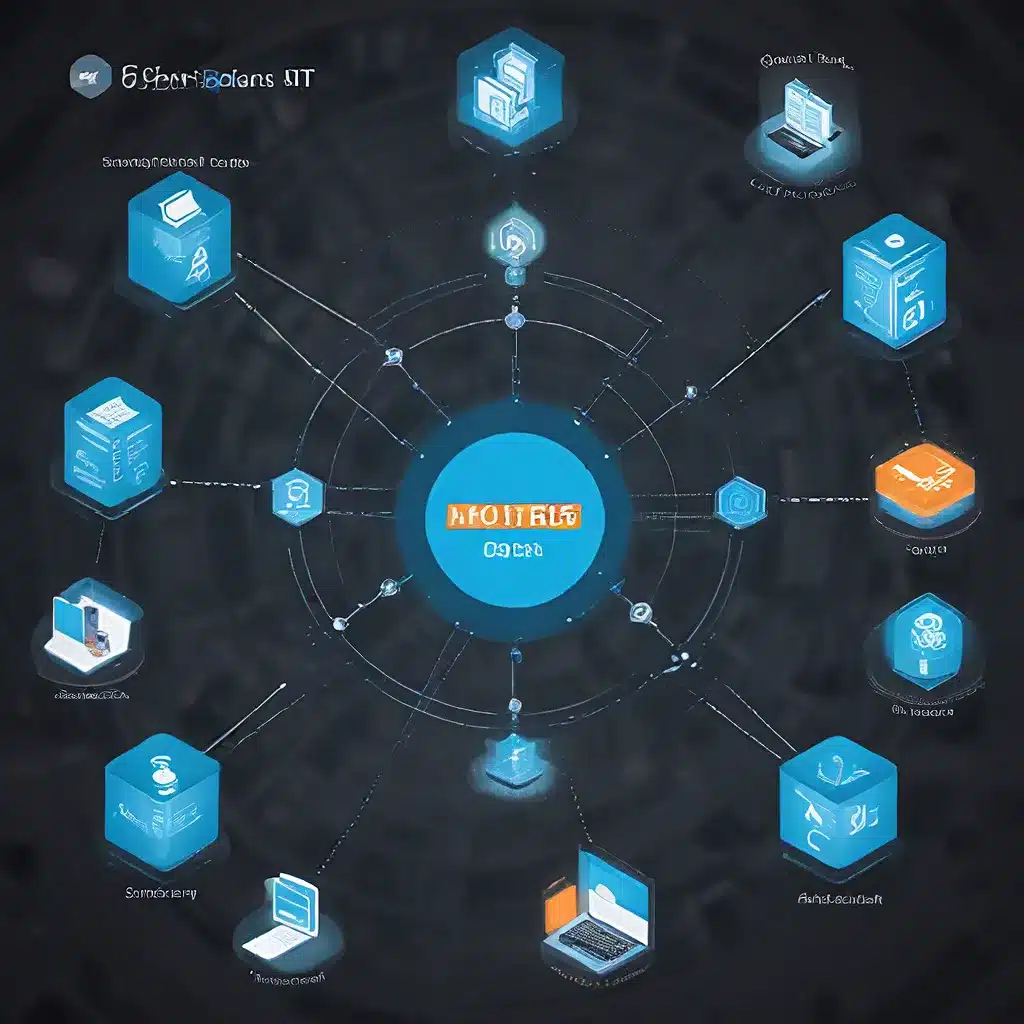
The Evolving Landscape of Sensor Networks and IoT
Sensor networks have become the backbone of the Internet of Things (IoT), enabling the seamless integration of physical devices, digital systems, and data-driven intelligence. As these technologies continue to advance, the need for secure and scalable data sharing protocols has become paramount. In this article, we will explore the latest developments in sensor network design, examine the security challenges faced by IoT applications, and delve into the strategies for energy-efficient data management.
The rapid growth of the IoT ecosystem has led to a proliferation of sensor-enabled devices, generating an unprecedented volume of data. Collaborative IoT applications, where multiple stakeholders share and leverage sensor data, have become increasingly prevalent in sectors ranging from smart cities and industrial automation to healthcare and environmental monitoring. Navigating this complex landscape requires a deep understanding of the underlying sensor network architectures and the data sharing protocols that facilitate secure and efficient data exchange.
Sensor Network Architectures: Centralized vs. Decentralized
Sensor networks can be broadly categorized into two main architectural models: centralized and decentralized.
Centralized sensor networks rely on a central hub or gateway to collect, process, and disseminate data from the various sensor nodes. This approach offers simplicity in design and management, as the central controller handles tasks such as data aggregation, analytics, and device coordination. However, centralized architectures can be vulnerable to single points of failure and may face scalability challenges as the number of connected devices grows.
On the other hand, decentralized sensor networks employ a more distributed approach, with sensor nodes communicating directly with each other or through a peer-to-peer (P2P) network. This architecture provides greater resilience and scalability, as the network can continue to function even if individual nodes fail. Decentralized networks also offer improved privacy and data autonomy, as sensor data is not aggregated in a central repository. However, the coordination and management of decentralized networks can be more complex, requiring robust routing protocols and distributed consensus mechanisms.
Secure Data Sharing Protocols for Collaborative IoT
Ensuring the security and privacy of sensor data is a critical concern in collaborative IoT applications. The open and interconnected nature of IoT systems makes them vulnerable to various cyberattacks, such as data breaches, unauthorized access, and denial-of-service (DoS) attacks. To address these challenges, a range of secure data sharing protocols have been developed.
Blockchain-based protocols, such as those leveraging Ethereum or Hyperledger Fabric, have emerged as a promising solution for collaborative IoT data sharing. These protocols utilize decentralized ledger technology to enable tamper-evident and auditable data exchange, while also supporting smart contracts for automated data access control and micropayments between participants.
Blockchain-based IoT data sharing can provide enhanced security, transparency, and trust among collaborating parties, making it well-suited for applications such as supply chain management, energy trading, and healthcare data exchange.
Another approach to secure data sharing is the use of attribute-based encryption (ABE), which allows for fine-grained access control and selective data sharing. In ABE-based protocols, sensor data is encrypted using attributes, and access is granted based on the fulfillment of specific policy requirements. This approach ensures that only authorized entities can access and utilize the shared sensor data, reducing the risk of unauthorized access and data breaches.
Energy-Efficient Sensor Network Design
The energy consumption of sensor networks is a critical consideration, as many IoT devices are battery-powered or operate in resource-constrained environments. Inefficient energy management can lead to reduced sensor lifetime, decreased network reliability, and higher maintenance costs. To address these challenges, researchers and engineers have developed various energy-efficient sensor network design strategies.
Low-power hardware and energy-harvesting technologies have been instrumental in improving the energy efficiency of sensor nodes. Advancements in microcontroller and radio frequency (RF) chip design have enabled sensor nodes to operate with lower power consumption while maintaining performance. Additionally, the integration of energy-harvesting mechanisms, such as solar, thermal, or vibration-based harvesters, can help offset the energy requirements of sensor nodes, reducing the need for frequent battery replacements.
At the network level, techniques like duty-cycling, data aggregation, and in-network processing have been employed to optimize energy usage. Duty-cycling involves strategically powering down sensor nodes when not in use, reducing overall energy consumption. Data aggregation and in-network processing can minimize the amount of data that needs to be transmitted, thereby reducing the energy required for communication.
Furthermore, adaptive and context-aware sensor network protocols have been developed to dynamically adjust transmission power, sampling rates, and processing loads based on environmental conditions and application requirements. These energy-aware protocols can help maintain optimal performance while extending the operational lifetime of sensor networks.
Conclusion: The Future of Secure and Scalable Sensor Data Sharing
As the IoT ecosystem continues to evolve, the need for secure and scalable sensor data sharing protocols has become increasingly critical. The convergence of sensor networks, blockchain technology, and energy-efficient design strategies holds the promise of unlocking new opportunities for collaborative IoT applications.
By leveraging decentralized data sharing protocols, fine-grained access control, and energy-aware network management, IoT stakeholders can unleash the full potential of sensor data, fostering innovation, transparency, and sustainability across a wide range of industries. As we move forward, the ongoing advancements in these technologies will continue to shape the future of secure and scalable sensor-driven ecosystems.
Sensor-Networks.org is dedicated to exploring the latest developments and practical applications in the realm of sensor networks and IoT. Visit our website to stay informed about the cutting-edge research, emerging trends, and industry insights that are shaping the future of this dynamic and evolving field.